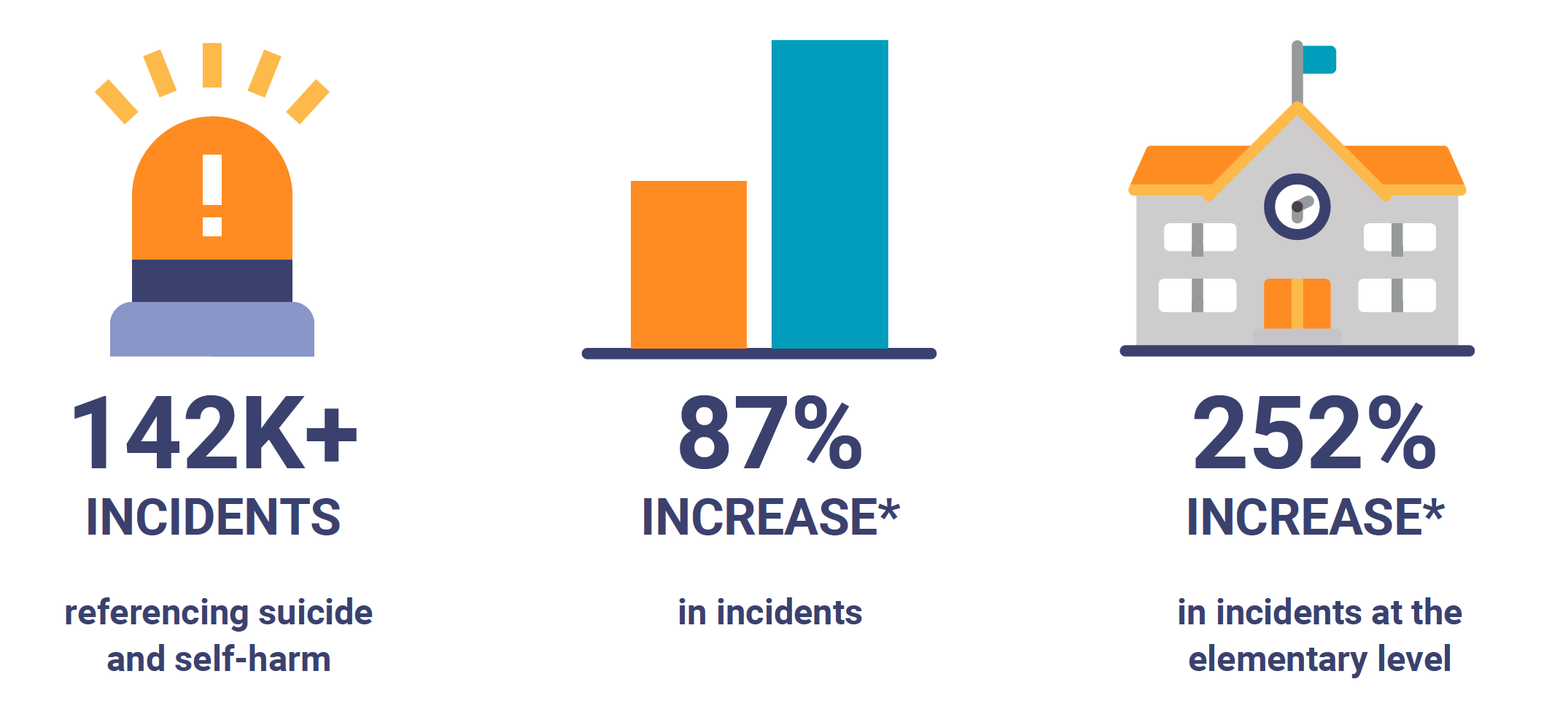Here at Gaggle, our mission is to ensure the safety and well-being of students and schools by leveraging people and technology. If our technology identifies something concerning in a student’s school-issued account—use of a keyword, flagged phrase, or troubling image—that content is then reviewed by our Gaggle Safety Team in order to verify the content, understand the context, and determine the level of severity. This team of experts includes trained social workers, crisis interventionists, educators, AI/technology developers, and therapists—all focused on helping K-12 districts protect students in the online environment.
During the 2020–21 school year, the Gaggle Safety Team spent more than 357,000 hours reviewing content, only alerting school districts about incidents that required intervention to help ensure student safety and well-being. Each incident is sorted by type according to the kind of content it represents—last school year, more than 142,000 incidents referenced suicide and self-harm. This number is greater than the total number of incidents found across all categories during the 2018–19 school year and about 92% of the total number of student safety incidents found during the 2019–20 school year. Of the incidents flagged for suicide or self-harm found during the 2020–21 school year, 8,715 revealed an imminent threat to a student’s well-being.

With almost four in every ten student safety incidents falling into this category, our data highlights the struggles today’s students are having with depression, suicidal thoughts, and self-harm. Incidents in this category have grown about 87% since the 2019–20 school year, rising from 148 incidents up to a concerning 276 incidents per 10,000 students. At the elementary level, incidents have increased by a staggering 252% compared to the 2019–20 school year, up from 24 incidents to 86 incidents per 10,000 students.
“We had a seven-year-old who was talking about self-harm. Were it not for that alert, were it not for our reaching out to the family, who knows what might have happened? Thanks to Gaggle, we have saved some of our students’ lives this past year. In that sense, it’s invaluable.”
Dr. Susan Enfield, Superintendent, Highline Public Schools (WA)
Each year, we share the number of student lives saved, and we’re often asked how we determine that figure. When considering lives saved, we either heard back from a district that a student’s life was saved, what the student wrote included a clear and definitive plan, or both. During the 2020–21 school year, Gaggle was instrumental in helping K-12 educators save the lives of 1,408 students—a 52% increase compared to the previous school year. This number equates to almost four student lives saved each day across the entire year.
We believe that every single life matters and remain motivated to work around the clock to support our district partners and the 5.2 million students we serve. To learn more about what our data revealed during the 2020–21 school year, be sure to check out our Through the Gaggle Lens: The State of Student Safety report.
*Increases reflect incident rates per 10,000 students compared to the 2019–20 school year, accounting for growth in Gaggle’s business.



Let Us Know What You Thought About This Post.
Put your comment below.